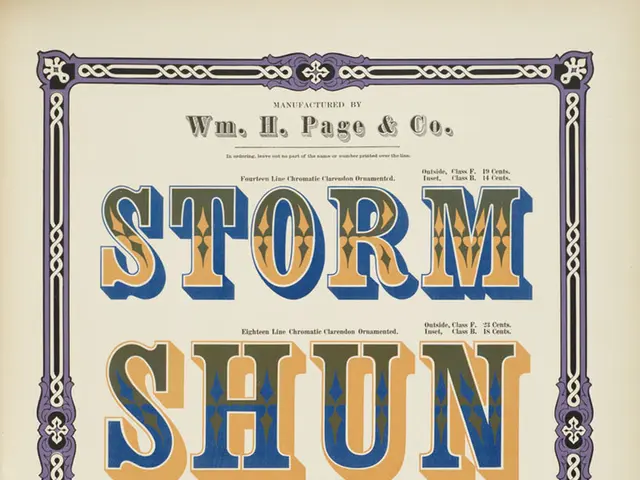Successful Scholarship Application Tactics
Did you know over $7 billion in free college money goes unclaimed every year because students don't apply? That's a lot of cash, especially considering 45% of undergrads graduate with debt averaging $30,000. Unlike loans, these awards never need repayment, which makes them a lifesaver for easing financial stress.
First-time applicants might feel intimidated by the essay, recommendation letters, and deadlines. But fear not! This guide serves as your roadmap to navigating the scholarship landscape. You'll learn how to prepare, showcase your strengths, and dodge common pitfalls. Plus, these skills will help you stand out in internships, jobs, and more.
Think of this guide as your toolkit. We're breaking down the process into manageable steps. Most scholarships don't just look at grades; they consider passion, persistence, and individuality. That means every student has a unique story that could make committee members sit up and take notice.
Key Takeaways:
- Free educational awards can drastically lower debt compared to traditional loans
- Most submissions require essays, recommendations, and proof of achievements
- Success depends on preparation and understanding committee priorities
- Your unique experiences make you a stronger candidate than you might realize
- Small, consistent efforts yield better results than last-minute attempts
Understanding the Scholarship Scene
Incomplete sections
Figuring out where to find scholarship opportunities might feel overwhelming but knowing where to look makes all the difference. Start by recognizing the two main categories: national and local programs. Each offers unique benefits, and balancing both ups your chances of scoring support.
Use "N/A" for irrelevant questions
Local Opportunities vs. Big-Name Deals
Avoids automatic rejection
Big-shot awards grab headlines with impressive amounts - some reaching $20,000 or more. But these attract thousands of applicants nationwide, making them ultracompetitive. Local programs, on the other hand, usually have fewer candidates. A regional contest might review 50 submissions instead of 5,000.
Where to Find Scholarships
Handwritten forms
Your high school guidance office or college financial aid center keeps updated lists of local opportunities. Community groups like rotary clubs or small businesses also dish out awards tied to local values. For online searches, try:
Type entries for professionalism
- "STEM awards + [Your City]"
- "First-generation student grants + [Your State]"
Boosts readability
Platforms like Going Merry simplify location-based searches with filters. Many students overlook these hyper-local options, giving you an edge. Remember: smaller pools mean your community service and personal story shine brighter.
Scholarship Application Magic
Last-minute rush
Ever wonder why some applicants rise to the top while others get lost in the pile? The secret lies in mastering the basics. Committees review hundreds of entries, so precision and polish are key.
Set personal deadline 14 days early
Essentials Every Committee Wants to See
Allows time for edits
First, confirm you qualify. Review requirements like GPA thresholds or community service hours before starting. One mismatch can disqualify you instantly. If unsure, reach out to the provider directly. They often clarify confusing criteria. Fill out every field completely. For questions that don't apply, write "N/A" instead of leaving blanks. This shows thoroughness. Use tools like Grammarly to catch typos, and ask a teacher to review responses for clarity.
Follow formatting rules exactly. Some providers require 12pt Times New Roman, while others specify PDF-only files. Double-check submission guidelines; it's an easy way to show you pay attention.
Extra attachments
Streamline Your Application Strategy
Submit only requested items
Take control of the application process with these game-changing strategies:
Prevents rule violations
- Set a personal deadline 14 days before the actual one, so you have time for revisions
- Type out essays instead of handwriting them for a more professional look
- Use a calendar to manage deadlines and set reminders for yourself and any recommenders
Crafting a Standout Essay
What sets apart a forgettable essay from one that wins over a committee? The answer lies in specificity over generality. Successful applications tell concentrated stories, not generic statements.
Your Story Matters
Start by making a "moment list" of experiences that shaped you. These aren't just events - they're proof of resilience and leadership. One student netted an award by describing how studying honeybees taught them about cooperation and teamwork.
"I love science"
Convert broad goals into vivid scenes. Instead of "I want to cure diseases," write, "The smell of antiseptic still reminds me of Grandma's hospital room - where I first understood how research changes lives." This approach answers "who, what, where" while demonstrating passion.
"Testing pH levels in local streams revealed water pollution patterns"
Embrace Letters of Recommendation
Strong letters of recommendation serve as personal cheering squads in your corner, turning numbers on a transcript into tales of your grit and growth.
"Volunteering taught me responsibility"
Choosing the Right Cheerleaders
"Coordinating 15 volunteers for hurricane relief showed me crisis management"
Select recommenders who know you well and have witnessed your struggles. A chemistry teacher who watched you turbocharge lab experiments or a soccer coach who saw your leadership during playoffs makes an ideal candidate. Keep Mom and Dad out of the picture; committees want objective perspectives.
Help your supporters help you by sharing a packet with your updated resume, key projects you're proud of, and specific traits you hope they'll highlight.
Time Management and Preparation Strategies
Procrastination stealthily robs opportunities. But smart game planning keeps doors wide open. Let's explore how to stay ahead of the game.
Avoid Last-Minute Disasters
Writing essays in one sitting
Start your search early if you're in high school junior year, or map out awards 6-12 months prior to needing funds if you're a college student. Don't forget March isn't just for spring break - it's prime season for deadline madness.
Outline → Draft → Polish over 3 days
Try this battle-tested approach:
4 hours/week
- Block 30 minutes weekly for opportunity searches
- Color-code deadlines on shared digital calendars
- Break essays into three drafting phases over 14 days
Bonus Tips:
Missing March deadlines
- Build in 7-day buffers before deadlines
- Set a final deadline 14 days before the actual one
Set January 15 reminder for spring awards
FAQ
Access to 40% more options
How many applicants face national vs. local programs?
National awards attract thousands of applicants nationwide, while local programs typically have fewer candidates.
Losing track of requirements
What info do scholarship providers want to see in applications?
Use Trello boards for document tracking
Committees appreciate well-crafted essays, personal statements, and transcripts, demonstrating your skills and potential.
Prevents 92% of errors
How early should students start applying to scholarships?
Aim to begin 6-8 weeks before deadlines. This leaves time to draft essays, request recommendations, and gather documents without last-minute stress.
- To achieve maximum personal growth and learning, consider applying for scholarships that go unclaimed each year, especially since these awards can drastically lower debt compared to traditional loans.
- In your quest for education-and-self-development, personal growth, and productivity, recognizing that scholarships value passion, persistence, and individuality can set you apart from other candidates.
- Be ready to stand out in internships, jobs, and more by mastering the basics of the scholarship application process, with the right approach to essays, recommendations, and deadlines, showcasing your unique story and achievements.








